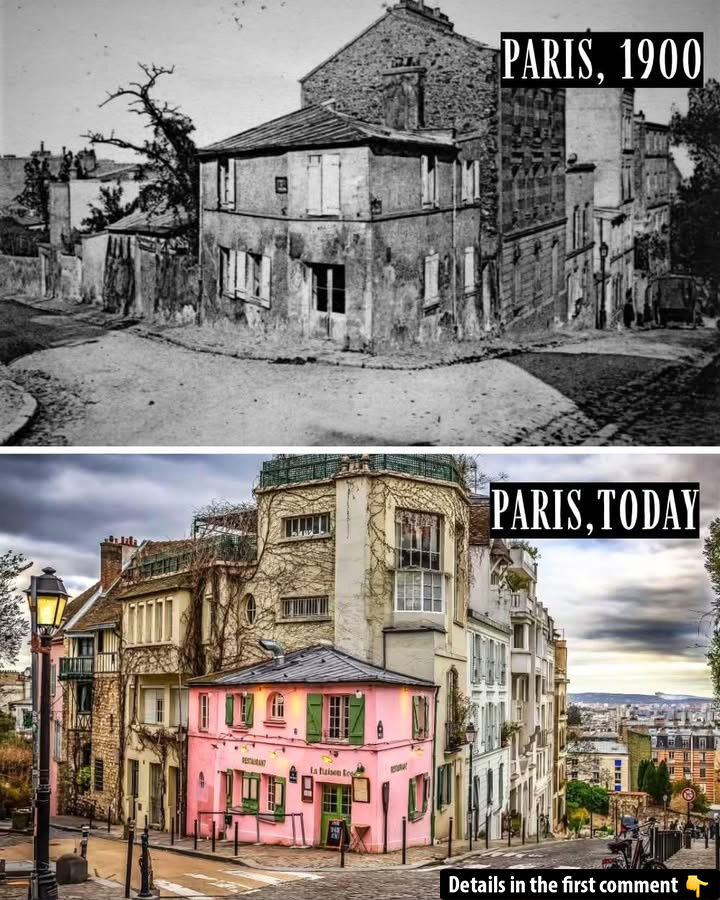Nestled in the heart of Montmartre, Paris, La Maison Rose, affectionately known as “The Pink House,” holds more than just a charming pink facade and picturesque setting. The café’s historical significance is etched in the rich cultural fabric of Montmartre, once a village of bohemians and artists before becoming part of the ever-evolving Paris. From Pablo Picasso to Maurice Utrillo, the walls of La Maison Rose have hosted some of the most influential artists and writers in history, making it a must-see landmark for both art lovers and history enthusiasts alike.
The Origins of La Maison Rose
La Maison Rose was built around 1850 in Montmartre, a district that, at the time, still had the atmosphere of a quiet village, filled with vineyards, homes, and windmills. The house that would go on to become La Maison Rose was bought by Germaine Pichot at the turn of the century, a woman who would leave a lasting imprint on the neighborhood.
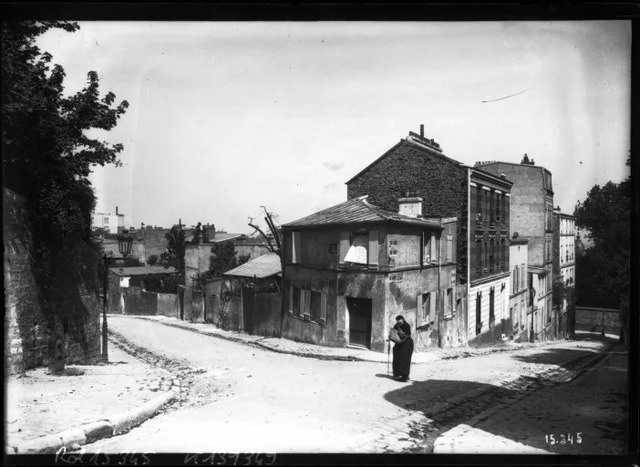
Married to Catalan artist Ramón Pichot, Germaine was not only a former model for Picasso but also a magnetic figure within the bohemian community of Paris. She created an environment at La Maison Rose that drew the greatest minds of the time, including famous figures like Henri Matisse, Albert Camus, and Maurice Utrillo. Her café was a gathering place for artists, intellectuals, and writers who saw Montmartre as a sanctuary for free-spirited creativity.
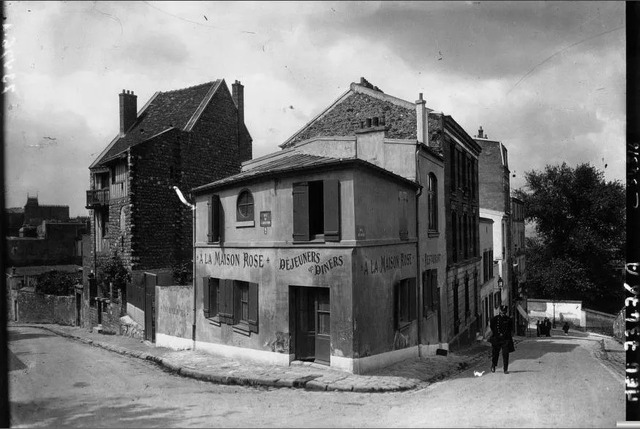
Video
Tune into this video to explore the heart of Paris, with stops at Place du Tertre, the Moulin Rouge, and a cozy dinner at La Maison Rose.
Germaine Pichot: The Magnetic Figure Behind La Maison Rose
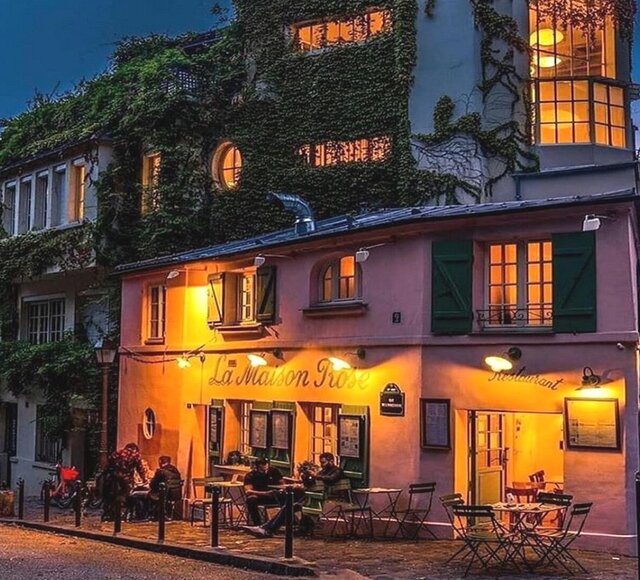
Germaine Pichot was more than just the owner of a café; she was the catalyst for the artistic exchanges that took place within the walls of La Maison Rose. As the wife of Ramón Pichot, an Impressionist painter, Germaine played an essential role in shaping the vibrant social scene that surrounded the café. Known for her charm and her ties to some of the most well-known artists in Paris, Germaine’s influence was far-reaching. Among her closest associates were Picasso and his circle, including the likes of Maurice Utrillo and Suzanne Valadon.
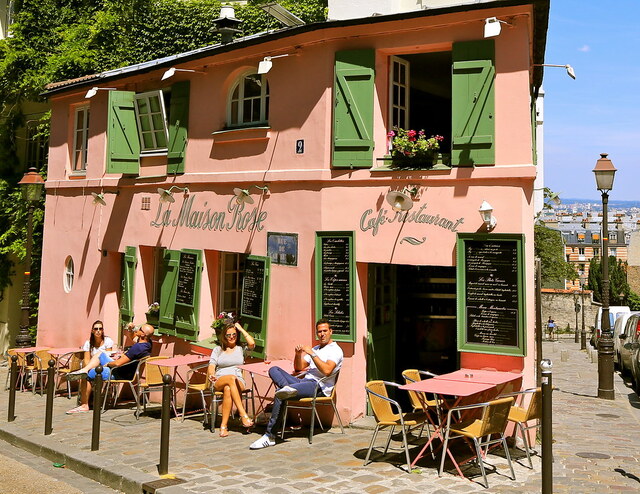
Her café became a sanctuary for these influential figures, and their artistic works were often shaped by their interactions with her. In particular, Picasso’s connections with Germaine and other artists around him helped shape some of his most pivotal works, including the melancholic period that followed the tragic death of Carlos Casegamas, a close friend who had fallen in love with Germaine.
The Artistic Scene at La Maison Rose
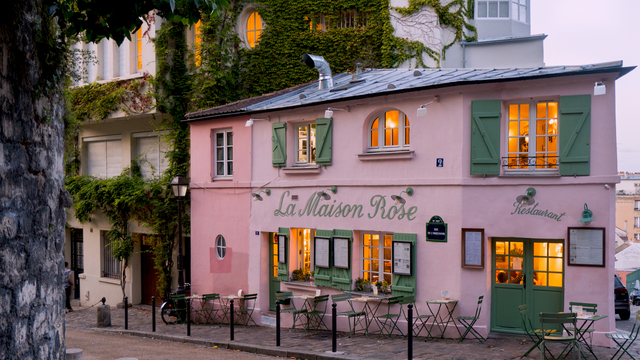
La Maison Rose wasn’t just a café; it was a thriving artistic hub, frequented by some of the most renowned names in modern art. The café’s atmosphere was permeated with creativity and intellectual exchange. Picasso, who had spent time with Germaine in the early years, would later capture this essence in his work. However, it wasn’t just Picasso who was drawn to La Maison Rose; renowned artists such as Matisse and the talented Maurice Utrillo found inspiration in the café’s inviting environment.
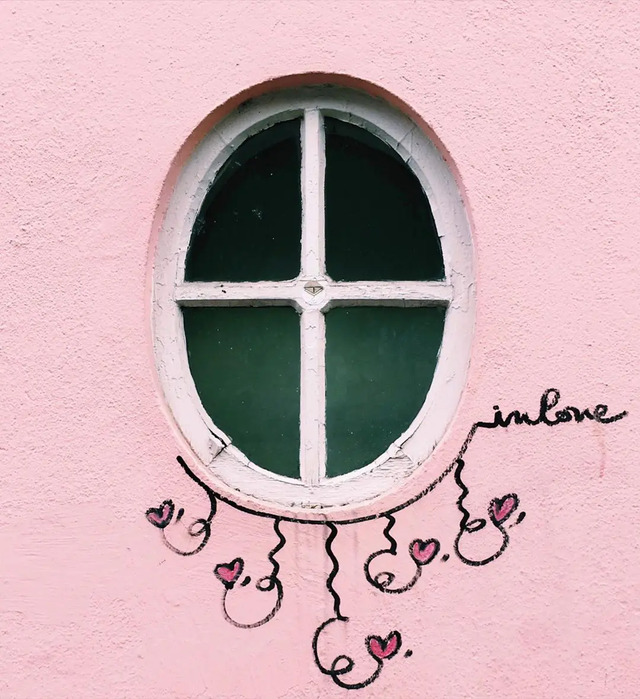
Utrillo, in particular, immortalized La Maison Rose in his painting titled La Maison Rose à Montmartre. His depiction of the café not only captured its exterior but also underscored its status as a beacon for the artistic community of the time. This connection between La Maison Rose and Utrillo’s paintings contributed to its lasting legacy as a cultural landmark. Even after Utrillo’s time, the café continued to attract artists and writers, cementing its place in the annals of Montmartre’s history.
The Tragic Story of Carlos Casegamas and Its Influence on Picasso
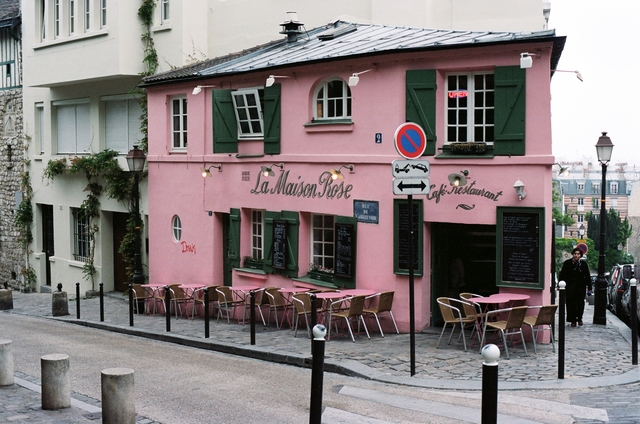
One of the most poignant stories related to La Maison Rose revolves around the death of Carlos Casegamas, a close friend of Picasso who had fallen in love with Germaine. Despite Germaine’s rejections, Carlos became obsessed, and tragically, his unrequited love led him to take his own life. The news of Carlos’ death deeply affected Picasso, causing him to retreat into his art and begin what would later be known as his Blue Period. This period, marked by sadness and a focus on the melancholic and the tragic, was born from the grief Picasso felt after Carlos’ death.
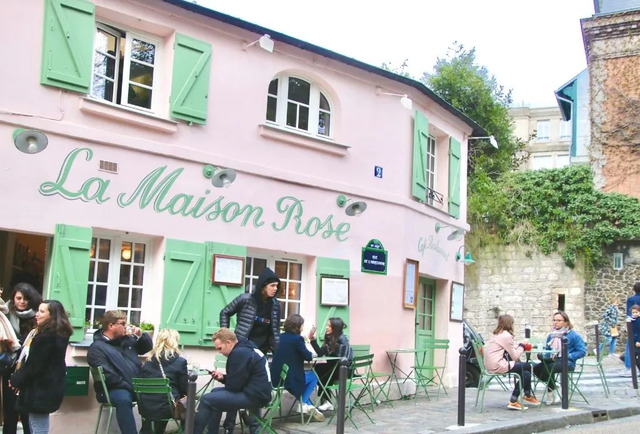
This somber chapter in the lives of Germaine and her circle of artists only adds depth to the story of La Maison Rose, turning it from a simple café into a place where the personal and the professional intertwined, leaving a lasting imprint on the creative souls that frequented its doors.
The Influence of Catalan Architecture on La Maison Rose
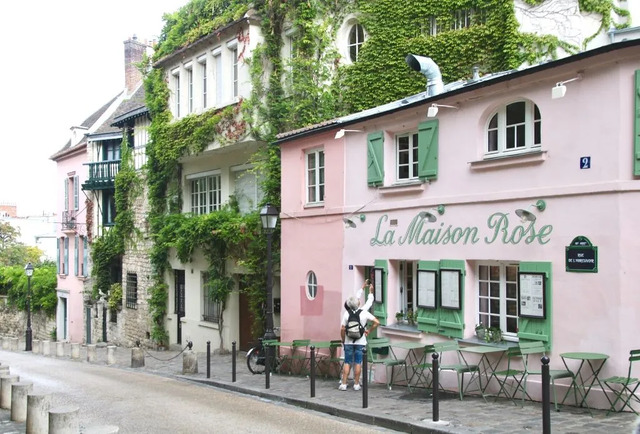
One of the most striking aspects of La Maison Rose is its vibrant pink color, a feature that has become synonymous with the café itself. The choice to paint the building this color was inspired by a trip Germaine and Ramón took to Catalonia, Spain. The towns they visited were known for their colorful homes, and it was during this visit that Germaine decided to paint La Maison Rose in the same bold hues. The pink façade became iconic, symbolizing both the couple’s ties to their Catalan roots and the bohemian spirit that would define the café for generations to come.
In addition to the pink color, the building’s charming details and triangular plot further enhanced its unique character, making it a standout in the landscape of Montmartre. The vibrant color and distinctive architecture ensured that La Maison Rose remained a beloved landmark for both locals and tourists.
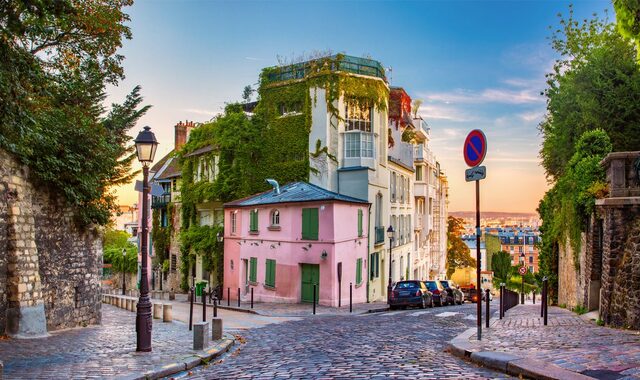
Maurice Utrillo’s Painting of La Maison Rose
Maurice Utrillo’s painting of La Maison Rose is perhaps one of the most famous artworks tied to the café’s legacy. Utrillo, who painted the iconic structure in the 1930s, captured the essence of Montmartre with his brushwork, immortalizing La Maison Rose in his famous piece The Little Pink House.

The painting was notable not only for its depiction of the café but also for the high price it fetched at auction, further cementing La Maison Rose’s status as a cultural symbol. Utrillo’s work brought worldwide attention to the café, and his numerous representations of La Maison Rose in his later paintings ensured that it remained an enduring symbol of the artistic spirit of Montmartre.
La Maison Rose and Its Survival Over the Decades
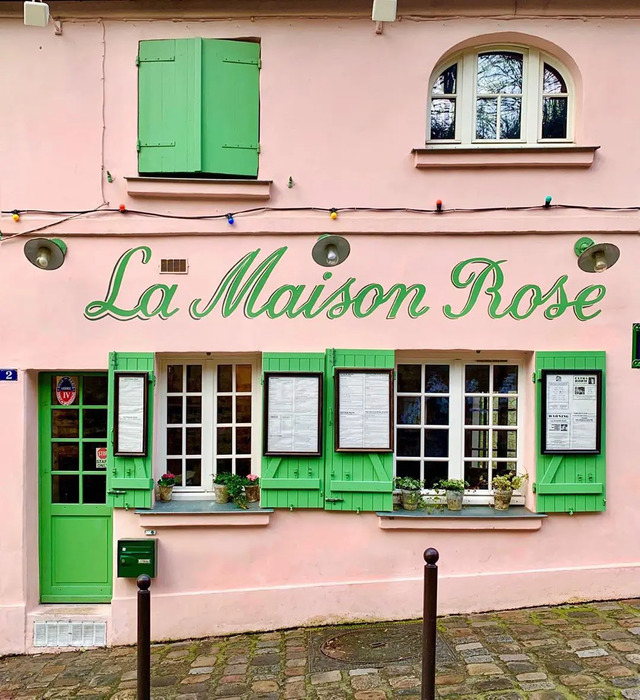
Throughout its history, La Maison Rose has survived numerous challenges, including a planned demolition in the early 1930s. During that time, urban development in Montmartre threatened the café’s existence, but La Maison Rose managed to survive, retaining its architectural integrity. The café’s survival was a testament to its importance in the local community, as it continued to be a meeting point for creatives and a vital piece of Montmartre’s cultural heritage.
While the exterior of La Maison Rose has remained largely unchanged, the café’s colors have shifted over time. After Germaine painted it pink in the early 20th century, the café underwent a white repainting in 1970 when it was purchased by Beatrice Miolano. In 2018, under the direction of Beatrice’s granddaughter, Laurence Miolano, La Maison Rose was restored to its former glory, maintaining the cherished pink hue that had become synonymous with its history.
Modern-Day La Maison Rose: A Blend of Tradition and Tourism
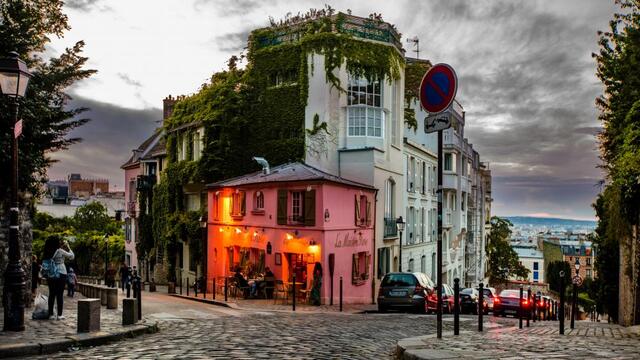
Today, La Maison Rose continues to be a beloved destination for tourists and locals alike. Visitors flock to Montmartre to snap photos of the iconic pink café, and while the clientele is now more likely to be tourists, the café retains its charm and historical significance. Visitors can enjoy a drink at La Maison Rose while marveling at the stunning views of the surrounding neighborhood, exploring the narrow streets that inspired so many great works of art.
La Maison Rose’s transformation into a popular tourist spot does not diminish its cultural heritage. In fact, it serves as a reminder of Montmartre’s artistic history and the vibrant community of painters, writers, and intellectuals that once called this neighborhood home.
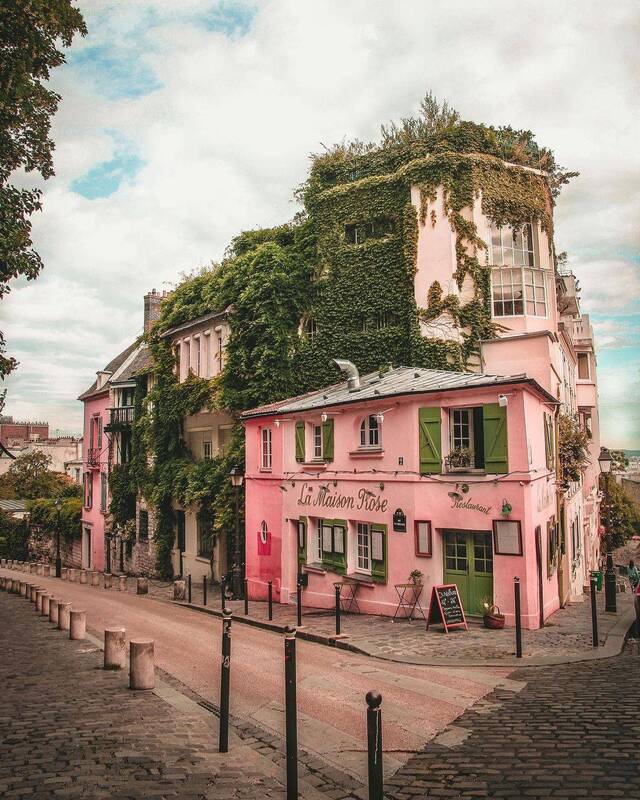
Video
Watch this video for an insightful guide to Paris, uncovering the city’s rich history, culture, and iconic landmarks.
Conclusion: La Maison Rose’s Lasting Impact on Montmartre and Beyond
La Maison Rose is more than just a café; it is a symbol of Montmartre’s artistic legacy and the bohemian spirit that defined Paris in the early 20th century. From its humble beginnings to its role in inspiring the works of legendary artists like Picasso and Utrillo, La Maison Rose has stood the test of time. Today, it continues to draw visitors from around the world, offering a glimpse into the creative world of Montmartre and a piece of Parisian history that is both timeless and ever-evolving.
